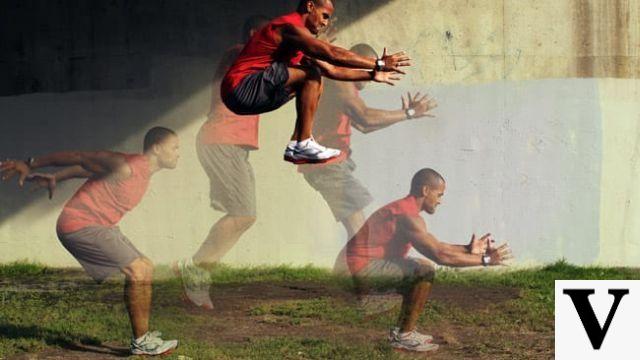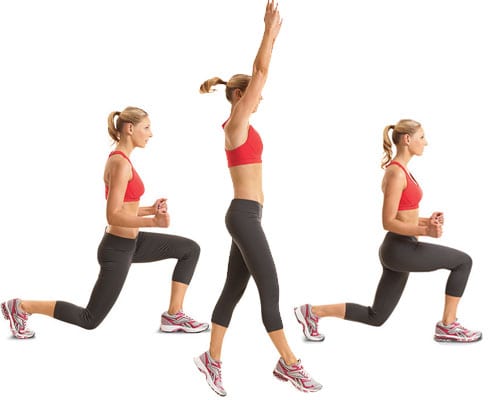Plyometric Exercises
Plyometric exercises have been used around the planet for many decades as an effective method for improving athletic performance and increasing strength levels in a variety of sports. More commonly known as jump training, the combination of these exercises can have incredibly beneficial effects on body health and fat reduction.
This particular training can also be viewed as a form of injury prevention or as a rehabilitation method.
(2) Plyometric workouts consist of stretching the muscle tendons, followed by an immediate one shortening of the tendon unit itself. This process is known as "Lengthening-shortening cycle", and that's what makes plyometric training so effective for improving athletic performance!
How to do a plyometric work?
The stretch-shortening cycle increases the explosive strength of the muscles.
Muscle action is divided into three main phases:
a) The Eccentric phase: the muscle stretches under tension
b) The Isometric phase: the point of static contraction, where there is no detectable movement of the muscle.
c) The Concentric phase: the muscle shortens.

These three stages are commonly known as "Lengthening-shortening cycle", which underlies the nature of plyometric exercises.
Plyometric training aims to decrease the time interval between the eccentric and concentric phase of the movement. The ability to do this is a particular trait of most successful athletes.
The relationship between strength and power in training can be quite complex, as as resistance increases, the speed of movement often decreases. In the event that an athlete performs a maximum lift, the athletic gesture will usually be slow. By reducing the overall load, the power and strength levels will tend to increase.
If an athlete can use the benefits of these tips to produce a good level of explosive strength, and combine this with the muscle energy gained from doing slow and very heavy lifts, then the athlete in question will greatly improve his athletic performance. (1)
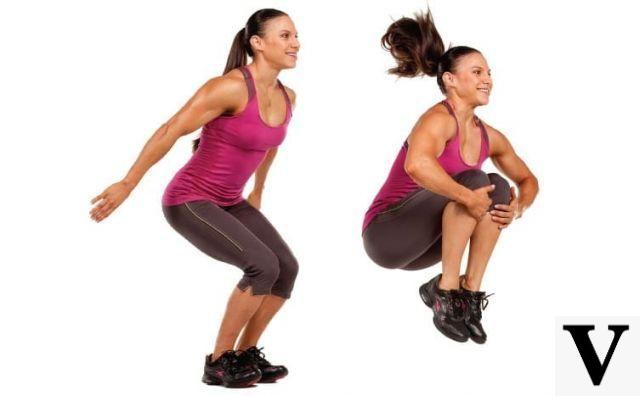
Plyometric exercises that use a method of rapidly absorbing the generated force, as an example, landing after a jump or even the force generated by jumping during a jump squat, are essential for any athlete who wants to transform the strength he possesses in muscle energy to be recalled during an athletic gesture.
The Benefits of Plyometric Training
Plyometric workouts have as their primary goal the rapid contraction of muscle fibers: These exercises are great for anyone, from experienced athletes to those who are just trying to:
1. Increase muscle mass.
2. Burn fat and lose weight.
3. Improve coordination and balance.
4. Increase strength levels and athletic performance.
5. Prevent injuries.
This style of training has been shown to work extremely well when combined with endurance programs aimed at increasing power. Plyometric exercises are particularly famous for reactive strength and jumping skills.
It is important to understand that with plyometric training, quality takes on greater importance than quantity to get results; this is due to the fact that direct ground contact with the load used is used, even when it is only body weight, and as an effect it can lead the athlete to overtraining or injuries if done incorrectly or in excess.
Some useful plyometric exercises are as follows:
1) Box Jump
This exercise is performed using box pliometrici, but it can also be done on other stable surfaces, such as on a bench.
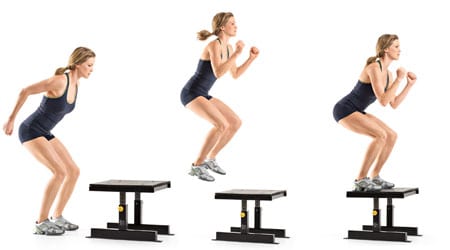
a) Start by placing your feet shoulder-width apart. So, step away from the box a little bit.
b) Perform a semi-squat, as in a squat.
c) Jump explosively onto the box, extending your hips and swinging your arms.
d) Push your feet against the ground to increase the explosive power of the movement.
2) Tuck Jump (Salti al Petto)
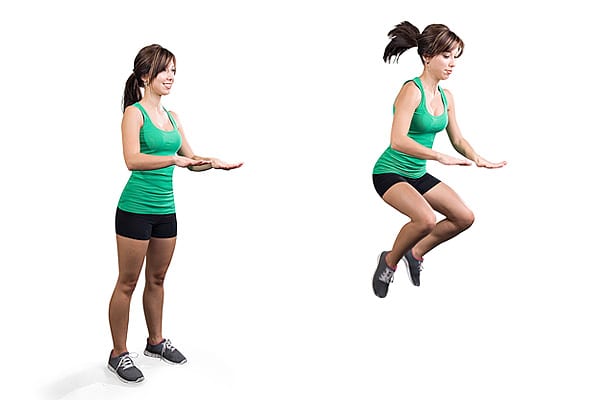
a) Stand with your feet shoulder-width apart, keeping your back straight.
b) Take a high jump with an explosive movement, bringing your knees to your chest.
c) Grab your knees with your hands before your feet touch the ground.
d) Land in an upright position, then repeat the movement for the number of repetitions needed.
3) Squat with Jump
a) Start by standing with your feet shoulder-width apart.
b) Imagine doing a classic squat: keep your back straight and your core contracted; crouch down before performing an explosive upward jump.
c) Land safely on the ground (as smoothly as possible to engage the muscles) and immediately return to the classic squat position.
d) Repeat for the number of repetitions required or until failure.
4) Explosive lunges with jump
a) Begin the exercise in the lunge position; there should be 90 ° between the hips and knees.
b) Jump explosively and swing your arms as you complete the movement.
c) Maintain the contracted position of the lunge.
d) Repeat the movement until you fail.
5) Kick Run
a) Start in the same starting position as the chest jumps
b) Keep your knees pointing down.
c) Jump and at the same time kick your heels backwards, so that they hit your buttocks.
d) Swing your arms as you jump and repeat the movement after returning your foot to the ground.
A tip not to be forgotten
Plyometric exercises can be easily included in any training program and do not require specific equipment. For this reason, these are all exercises that can be done at home: just find a soft surface, a gym mat or a green area to perform the workout safely.
Make sure you do a good warm up and do a lot of stretching exercises (at least 15 minutes), then start doing the movements slowly.
It is important to pay close attention to the correct execution when doing this type of training and aim for quality rather than quantity.
Plyometric exercises are a valuable addition to any training program, especially for those who realize they are going to improve their athletic abilities.
